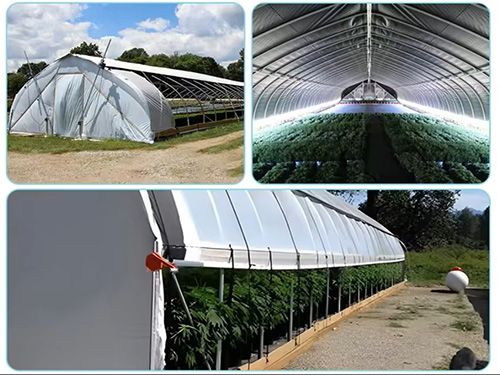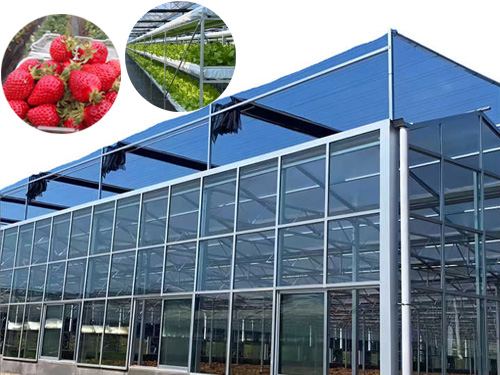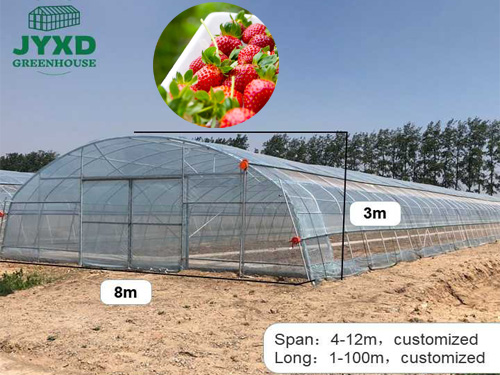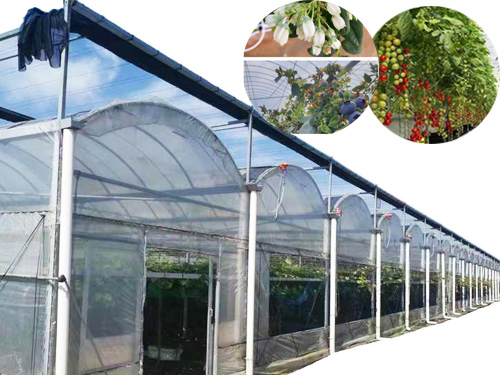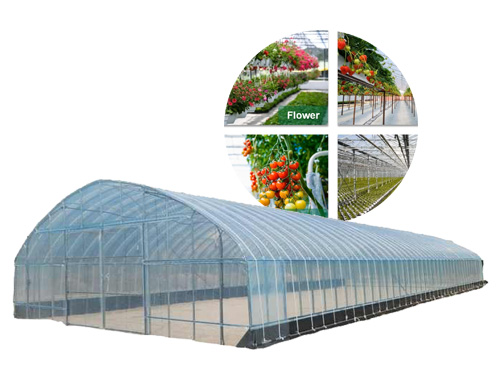NEWS DETAILS
NEWS INFORMATION
Year-Round Greenhouse Vegetable Production: Crop Rotation & Market Demand Alignment
AUTHOR:jyxd-greenhouse DATE:2025-04-03 15:58:37 HITS:173
Year-round greenhouse vegetable production offers growers a unique opportunity to maximize profitability and meet consumer demand consistently. By implementing effective crop rotation strategies and aligning production with market needs, growers can ensure a steady supply of fresh vegetables while maintaining soil health and reducing pest pressures. This article explores how to achieve year-round greenhouse vegetable production through smart crop rotation and market demand alignment.
Why Year-Round Greenhouse Production Matters
Greenhouses provide a controlled environment that allows for continuous vegetable production, regardless of external weather conditions. However, to maximize efficiency and profitability, growers must:
· Maintain Soil Health: Prevent nutrient depletion and pest buildup through crop rotation.
· Meet Market Demand: Align production with consumer preferences and seasonal trends.
· Optimize Resources: Use space, water, and energy efficiently to reduce costs.
1. The Role of Crop Rotation in Year-Round Production
Crop rotation is a systematic approach to changing the types of crops grown in specific areas over time. It is essential for maintaining soil health and preventing pest and disease cycles.
Benefits of Crop Rotation:
· Nutrient Management: Different crops have varying nutrient needs, reducing soil depletion.
· Pest Control: Rotating crops disrupts pest life cycles, reducing infestations.
· Disease Prevention: Minimizes the buildup of soil-borne pathogens.
· Weed Suppression: Alternating crops can outcompete weeds, reducing herbicide use.
Crop Rotation Strategies:
· By Plant Family: Rotate crops from different plant families (e.g., tomatoes, peppers, and eggplants are all nightshades; rotate with legumes or brassicas).
· By Nutrient Needs: Alternate heavy feeders (e.g., tomatoes) with light feeders (e.g., lettuce) or nitrogen-fixing crops (e.g., beans).
· By Growth Cycle: Pair fast-growing crops (e.g., radishes) with slow-growing ones (e.g., cabbage) to maximize space.
2. Aligning Production with Market Demand
Understanding consumer preferences and market trends is crucial for year-round profitability. Here’s how to align your greenhouse production with market demand:
Analyze Market Trends:
· Seasonal Demand: Grow high-demand vegetables during peak seasons (e.g., tomatoes in summer, leafy greens in winter).
· Local Preferences: Research what vegetables are popular in your region and focus on those crops.
· Emerging Trends: Stay updated on trends like organic produce, heirloom varieties, or specialty vegetables.
Plan Production Cycles:
· Staggered Planting: Plant crops in intervals to ensure a continuous harvest.
· Succession Planting: Replace harvested crops with new ones to maintain productivity.
· Diversify Crops: Grow a mix of high-value and high-demand vegetables to reduce risk.
Build Relationships with Buyers:
· Direct-to-Consumer: Sell through farmers’ markets, CSAs, or online platforms.
· Wholesale Partnerships: Partner with local restaurants, grocery stores, or distributors.
· Value-Added Products: Offer processed products like sauces or pickles to extend shelf life and increase revenue.
3. Tools for Year-Round Production Planning
Modern greenhouses can leverage advanced tools to streamline year-round production:
· Crop Planning Software: Use tools like Cropio or AgSquared to plan rotations, track planting schedules, and monitor yields.
· Market Analysis Tools: Platforms like USDA Market News or local agricultural reports provide insights into demand and pricing.
· Automated Systems: Invest in climate control, irrigation, and lighting systems to optimize growing conditions.
4. Benefits of Year-Round Greenhouse Production
Implementing year-round production offers numerous advantages:
· Steady Income: Continuous production ensures a consistent revenue stream.
· Market Flexibility: Aligning with demand allows growers to capitalize on high prices.
· Resource Efficiency: Maximizes the use of greenhouse space, water, and energy.
· Sustainability: Crop rotation and diversified production reduce environmental impact.
![]()
5. Case Study: Successful Year-Round Production
A greenhouse operation in California implemented crop rotation and market alignment strategies to achieve year-round production. By rotating tomatoes, lettuce, and herbs and focusing on local restaurant demand, they:
· Increased Revenue: Achieved a 25% boost in annual income.
· Reduced Pests: Crop rotation minimized pesticide use.
· Enhanced Soil Health: Balanced nutrient management improved soil quality.
6. Best Practices for Year-Round Production
To maximize the success of your year-round greenhouse production, follow these best practices:
· Plan Ahead: Use crop planning tools to map out rotations and planting schedules.
· Monitor Soil Health: Regularly test soil and amend nutrients as needed.
· Stay Flexible: Adjust production based on market feedback and changing trends.
· Invest in Technology: Use automation and monitoring systems to optimize growing conditions.
Conclusion
Year-round greenhouse vegetable production is a powerful strategy for maximizing profitability and meeting consumer demand. By implementing effective crop rotation and aligning production with market needs, growers can ensure a steady supply of fresh vegetables while maintaining soil health and reducing pest pressures. Whether you’re a small-scale grower or a commercial operation, these strategies will help you achieve sustainable, year-round success.
For more expert tips and high-quality greenhouse solutions, visit our website and take your cultivation practices to the next level. Let’s grow smarter and cultivate a greener future together!
![]()
Meta Description: Learn how to achieve year-round greenhouse vegetable production through crop rotation and market demand alignment. Discover strategies for maximizing profitability and maintaining soil health.
Hebei Juyou Xinda Greenhouse Facilities Co.,Ltd.
Copyright © 2024-2025 https://www.jyxd-greenhouse.com. All Rights Reserved Hebei Juyou Xinda Greenhouse Facilities Co.,Ltd.Copyright





 Current Location:
Current Location:


